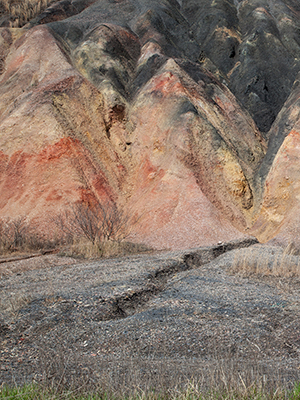We are told that prior to European contact, North America was a territory defined by its emptiness. A space without human mark. A fallow continent–devoid of evidence of human occupation and meaning. But under the settler-colonial ploughs, pierced by the
land surveyors monuments, and shrouded by cities and fields, is a vast network of pre-contact Native American Mounds. They stand in silent witness to a millennia of North American settlement, being, and meaning that puts to rest this narrative of absence.
Yet alongside these burial, effigy, and temple mounds are the mounds of our present day. Slag heaps, landfills, and sundry detritus of an anthropogenic landscape
that we make when we don’t think about making landscapes.
Significant and Insignificant Mounds looks to read these two landscapes across one another–to complicate our understandings of authenticity, meaning, and form.
On a material level, Significant and Insignificant Mounds consists of unpublished archival material, lyrical essays, experimental writing, and contemporary photographs of both the pre-contact Native American Indian mounds as well as the industrial piles that continue to be produced in the floodplain of the Mississippi River. Conceptually, it is oriented to an intentional flattening of signification—where meaning mingles uneasily with form. It puts us in proximity of meaning, without being identical to it.
Clearly, the value judgments suggested in our title do not cut along easy lines. For in the end, each of these mounds, on its own terms, is both significant and insignificant. They are all markers to a way of being, a way of seeing the world. Our interest in the pairing of text and image, and in the pairing of so-called meaning-filled and meaning-less subjects, is to bring the process of signification itself to the surface in order to complicate the received value judgments that so often attend landscape photography and description.
|
